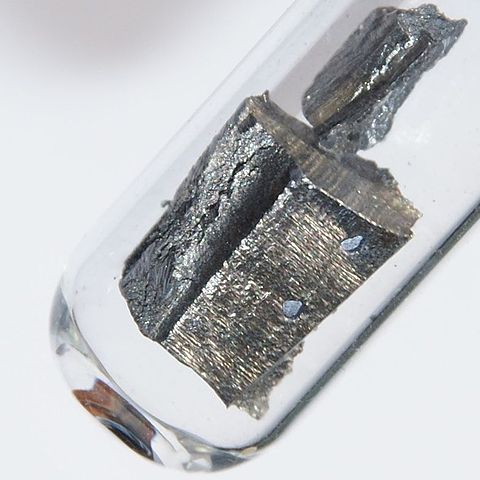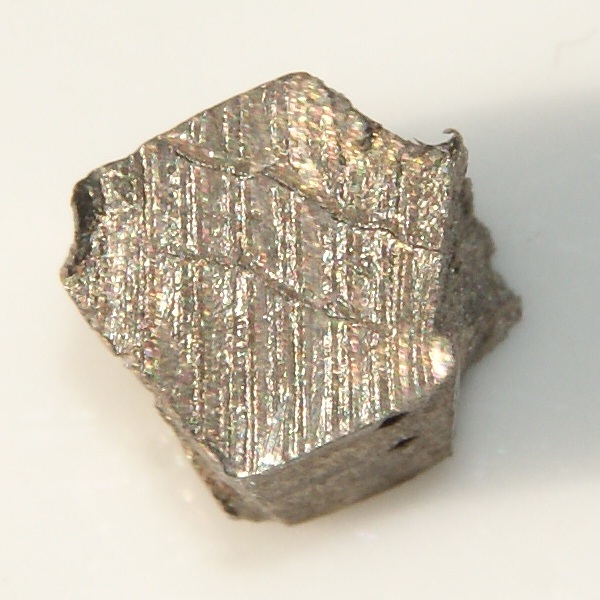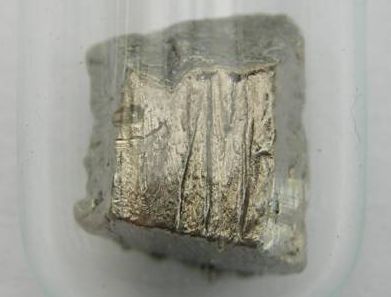Neodymium is a chemical element with the atomic symbol Nd, atomic number 60 and atomic weight 144.3. It belongs to the lanthanides group and has the electronic configuration [Xe]4f4 5d1 6s2. Neodymium has a melting point of 1021°C and a boiling point of 3074°C. It is a relatively abundant element on earth and is mainly found in igneous and metamorphic rocks.
Introduction
Neodymium was first discovered by Carl Auer von Welsbach in Vienna, Austria in 1885. He named it neodymium after the Greek words “neos” meaning new and “didymos” meaning twin. It was first isolated from a mineral called “didymia” which is now known to contain both praseodymium and neodymium.
The two elements could not be separated until 1925 when a method for isolating them was developed by Austrian chemist Baron Carl Auer von Welsbach.
Neodymium is a silvery-white metal that is relatively soft and ductile. It is highly reactive and tarnishes readily in air and reacts with water and steam to form hydrated neodymium compounds. It also reacts with acids and forms neodymium salts. Neodymium has six known oxidation states ranging from +3 to +5.
Neodymium is a relatively abundant element and can be found in igneous, metamorphic and sedimentary rocks. It is also found in phosphate and carbonate minerals as well as in some rare earth ores. Neodymium is also found in various sources of seawater and in some sedimentary rocks.

Neodymium has many uses and applications in industry and technology. It is primarily used in the production of permanent magnets, glass, welding, cutting and optical equipment. It is also used in lasers and optical equipment.
Neodymium is considered to be a non-toxic element, however, overexposure to it can cause adverse health effects such as skin and eye irritation. In addition, neodymium can have an environmental impact if it is not properly managed.
Neodymium is most commonly mined from monazite and bastnasite, which are rare earth ores. The process of production and extraction of neodymium is costly and requires a complex series of steps. The cost of production and extraction of neodymium varies depending on the source and quality of the ore.
Neodymium is a fascinating and useful element. It has a wide range of applications and uses in industry and technology. It is also an abundant element on earth and is relatively non-toxic. The future of neodymium production and use looks promising as technology advances and new uses for it are discovered.
Physical Characteristics
Neodymium is a chemical element with the symbol Nd and atomic number 60, and its atomic weight is 144.2 g/mol. It is part of the lanthanide series and is commonly found in the Earth’s crust in combination with other elements. Neodymium belongs to the group of transition metals, and it is located in period 6 in the periodic table.
Neodymium is a soft, malleable silver-colored metal at room temperature, and it has a melting point of 1021 °C and a boiling point of 3147 °C. It is a paramagnetic metal, and it is slightly more stable in air than other lanthanides due to a protective oxide layer that forms on its surface.
Neodymium is also a relatively abundant element, with an estimated abundance in the Earth’s crust of about 39 parts per million.
Neodymium has five naturally occurring oxidation states; -3, 0, +1, +2, and +3. It is usually found in oxidation state +3, and its cationic form is a bright yellow color in solution. It is highly reactive and can form a variety of compounds with other elements, such as oxides, halides, nitrides, phosphides, and sulfides.
Neodymium is a vital element for many industries, and it is used in a wide range of applications, from electronics and lasers to glass manufacturing and welding and cutting. It is a key component in many permanent magnets, and its electrical and magnetic properties make it essential for the production of lasers and optical equipment.
Neodymium is an important element with a variety of uses and applications. Its fascinating properties make it a valuable asset and its production and mining are necessary to sustain its use in many industries.
Chemical Properties
Neodymium is one of the rare earth elements and is famously known for its strong magnetic properties. It is a relatively soft metal and has a silvery-white color. This element is highly reactive and its chemical properties make it a desirable material for many applications.
Neodymium has an atomic symbol of Nd, an atomic number of 60, and an atomic weight of 144. It is classified as a lanthanide with a group number of 3. The metal has a melting point of 1021°C and a boiling point of 3127°C.
The most common oxidation states of neodymium are +2 and +3. The +3 state is the most common, and it is similar to that of scandium, yttrium, and lanthanum. This element is highly reactive when exposed to air and can easily form a protective oxide layer in the form of Nd 2 O 3 . When heated to a point where the oxide layer is destroyed, the metal will further react with the oxygen in the air.
Neodymium also forms compounds with other elements such as halides, oxyhalides, oxides, hydroxides, and nitrates. The metal also reacts readily with water, forming a hydroxide solution and releasing hydrogen gas.
When neodymium is exposed to a high temperature, it forms a volatile neodymium oxide, which can be difficult to remove. This oxide can form in the presence of oxygen, sulfur, and chlorine.
Neodymium is also unique in its ability to form a variety of coordination complexes with various ligands. These coordination complexes can be used in many applications, including catalysts and fuel cells.
Neodymium compounds are also used as catalysts in the production of high-value compounds such as polymers, pharmaceuticals, and fine chemicals. The catalytic properties of neodymium are also used in the production of methanol and the production of hydrogen.
In addition, neodymium is used as a catalyst for the production of a wide variety of fuels including gasoline, diesel, and propane. Neodymium compounds are also used in the production of pigments, fluorescent powder, and paints.
Environmental Impact
Neodymium has a range of potential impacts on the environment. When exposed to the air, neodymium reacts with oxygen to form a neodymium oxide which can then be dispersed in the environment. Ingestion of neodymium oxide can cause health problems, and, depending on the level of exposure, can be dangerous and even fatal.
Neodymium is relatively non-toxic, but when large quantities are present in the environment, it can lead to long-term health issues.
Neodymium can also be toxic to aquatic organisms if it is released into bodies of water, and its environmental impact can vary depending on the levels of exposure. Neodymium can accumulate in the body tissues of organisms, accumulating over time. In addition, neodymium can bind to organic material in the water, and can therefore be taken up by aquatic organisms, which can lead to further accumulation in the body.
Neodymium can also be toxic to plants, animals, and other organisms. Neodymium can be found in the soil, and can cause damage to plants and animals. It can also be toxic to microorganisms in the soil, and can lead to the leaching of heavy metals and other materials into the water supply.
Neodymium can also be released into the atmosphere and can be dispersed into clouds, where it can be inhaled by humans and animals. Inhalation of neodymium oxide can lead to the formation of neodymium-related compounds in the body, which can be toxic and cause health problems.
Neodymium is also a potential radiological hazard and can be hazardous if it is mishandled. Neodymium can be radioactive when it is in its free form, and can cause health issues if it is not handled properly. Neodymium can also be released into the atmosphere if it is mishandled, and can be dispersed into the air, which can cause health problems if breathed in.

SONY DSC
Mining and Production
Neodymium is not found in its pure elemental form in nature but is mined from other sources. It is found in several minerals, such as monazite sand, bastnasite, and eudialyte. Monazite sand is the most common source of neodymium and is mined in large quantities in Brazil, India, Australia, and other areas of South Asia. On an industrial level, neodymium is mainly mined from two types of mineral deposits: carbonate-hosted deposits and placer deposits.
Carbonate-hosted deposits are found in areas where carbonate rocks have a high neodymium concentration. These deposits are the most common type of neodymium deposit, and they are found in China, Russia, Vietnam, and South Africa. Placer deposits are created when weathering and erosion cause neodymium to be released from its ore and collected in riverbeds. These deposits are found in Canada, India, Australia, and Brazil.
The process of extracting neodymium from the ore is a complicated and expensive one. The ore must first be crushed and ground down into smaller particles. The ore is then placed in special tanks and treated with sulfuric acid, which dissolves the neodymium and other metals. The solution is then filtered, and the neodymium is separated out and precipitated.
The purified neodymium is then heated to over 1000 degrees Celsius, which forms a solid neodymium oxide. The neodymium oxide is then reduced in a vacuum furnace to create neodymium metal.
The cost of producing neodymium depends on the type of deposit it is sourced from. Carbonate-hosted deposits can be more expensive to mine and process because of the complicated extraction process. Placer deposits can be less expensive to mine and process because they require less processing.
Neodymium is also available in recycled form. Recycled neodymium is typically cheaper than newly mined neodymium, but it is not as pure as newly mined neodymium. Recycled neodymium is mainly sourced from used electronics, such as old computers and cell phones.
The increasing demand for neodymium has caused some concerns about its availability. While neodymium deposits are found in many areas of the world, some countries, such as China, have begun limiting their production of neodymium in order to protect their own resources.
This has caused a rise in the prices of neodymium, as the supply of neodymium is becoming increasingly limited.
Uses and Applications
Neodymium is a rare earth element with many different uses and applications. It is used in many industries and plays an important role in the production of goods, from electronics to lasers and glass.
One of the most common uses for neodymium is in the production of permanent magnets. This is due to its high magnetic strength and resistance to demagnetization. It is used in the production of motors, hard disk drives, and microphones. Neodymium magnets are also used in magnetic resonance imaging (MRI) machines and wind turbines.
The glass industry often uses neodymium in the production of lenses and fiber optics. The element is used as an optical glass due to its ability to produce a wide range of colors. Neodymium is used to reduce the amount of light dispersion and to improve light transmission. This has made it a popular choice for telescopes, microscopes, and other devices that require high-precision optical components.
Neodymium is also used in arc welding and cutting. It is used in the form of a coating on electrodes in order to improve arc starts and decrease the amount of spatter. Neodymium produces a brighter arc, which is helpful in welding thin materials and materials with low melting points.
Neodymium is also a key component in the production of lasers and optical equipment. It is used in both solid-state and gas lasers due to its ability to produce intense laser light. It is also used in optical equipment, such as eyeglasses and sunglasses, due to its ability to create different colors of light.
Finally, neodymium is used in the production of nuclear reactors and nuclear weapons due to its ability to absorb neutrons. It is also used in the production of fuel rods for nuclear power plants.
Neodymium is an important element with many different uses and applications. Its ability to create different colors of light, produce intense laser light, and absorb neutrons make it a valuable asset in many industries. Its use in the production of permanent magnets, lasers, and optical equipment has made it an indispensable element in the modern world.

Facts
The name of the element is derived from the Greek word “neos didymos” meaning new twin
Neodymium is a chemical element with the symbol Nd
Its atomic number is 60
neodymium is as prevalent in the Earth’s crust as nickel, copper, and cobalt.
It is a hard, slightly malleable, silvery metal that quickly tarnishes in air and moisture.
Neodymium’s concentration is about thirty-eight milligrams per kilogram in the crust
Neodymium was discovered in 1885 by the Austrian chemist Carl Auer von Welsbach
The current reserves of neodymium are believed to be around eight million tons
Two of neodymium’s radioactive isotopes, Nd-144 and Nd-150, are also found in nature.
Neodymium is the fourth member of the lanthanide series
It is most often found as a component in monazite and bastnasite minerals.
The world’s production of neodymium was about 7,000 tons in 2004
Most of the world’s commercial neodymium is mined in China
Naturally occurring neodymium (60Nd) is composed of five stable isotopes—142Nd, 143Nd, 145Nd, 146Nd and 148Nd
142Nd is the most abundant (27.2% of the natural abundance)
In all, 33 radioisotopes of neodymium have been detected as of 2022
To make neodymium magnets it is alloyed with iron, which is a ferromagnet.
Neodymium magnets (an alloy, Nd2Fe14B) are the strongest permanent magnets known
Neodymium is the fourth member of the lanthanide series
Data
| Neodymium | ||||||||||||||||||||||||||||||||||||||||||||||
|---|---|---|---|---|---|---|---|---|---|---|---|---|---|---|---|---|---|---|---|---|---|---|---|---|---|---|---|---|---|---|---|---|---|---|---|---|---|---|---|---|---|---|---|---|---|---|
| Pronunciation | (NEE-oh-DIM-ee-əm) | |||||||||||||||||||||||||||||||||||||||||||||
| Appearance | silvery white | |||||||||||||||||||||||||||||||||||||||||||||
| Standard atomic weight Ar°(Nd) | ||||||||||||||||||||||||||||||||||||||||||||||
|
||||||||||||||||||||||||||||||||||||||||||||||
| Neodymium in the periodic table | ||||||||||||||||||||||||||||||||||||||||||||||
| Atomic number (Z) | 60 | |||||||||||||||||||||||||||||||||||||||||||||
| Group | f-block groups (no number) | |||||||||||||||||||||||||||||||||||||||||||||
| Period | period 6 | |||||||||||||||||||||||||||||||||||||||||||||
| Block | f-block | |||||||||||||||||||||||||||||||||||||||||||||
| Electron configuration | [Xe] 4f4 6s2 | |||||||||||||||||||||||||||||||||||||||||||||
| Electrons per shell | 2, 8, 18, 22, 8, 2 | |||||||||||||||||||||||||||||||||||||||||||||
| Physical properties | ||||||||||||||||||||||||||||||||||||||||||||||
| Phase at STP | solid | |||||||||||||||||||||||||||||||||||||||||||||
| Melting point | 1297 K (1024 °C, 1875 °F) | |||||||||||||||||||||||||||||||||||||||||||||
| Boiling point | 3347 K (3074 °C, 5565 °F) | |||||||||||||||||||||||||||||||||||||||||||||
| Density (near r.t.) | 7.01 g/cm3 | |||||||||||||||||||||||||||||||||||||||||||||
| when liquid (at m.p.) | 6.89 g/cm3 | |||||||||||||||||||||||||||||||||||||||||||||
| Heat of fusion | 7.14 kJ/mol | |||||||||||||||||||||||||||||||||||||||||||||
| Heat of vaporization | 289 kJ/mol | |||||||||||||||||||||||||||||||||||||||||||||
| Molar heat capacity | 27.45 J/(mol·K) | |||||||||||||||||||||||||||||||||||||||||||||
Vapor pressure
|
||||||||||||||||||||||||||||||||||||||||||||||
| Atomic properties | ||||||||||||||||||||||||||||||||||||||||||||||
| Oxidation states | 0, +2, +3, +4 (a mildly basic oxide) | |||||||||||||||||||||||||||||||||||||||||||||
| Electronegativity | Pauling scale: 1.14 | |||||||||||||||||||||||||||||||||||||||||||||
| Ionization energies |
|
|||||||||||||||||||||||||||||||||||||||||||||
| Atomic radius | empirical: 181 pm | |||||||||||||||||||||||||||||||||||||||||||||
| Covalent radius | 201±6 pm | |||||||||||||||||||||||||||||||||||||||||||||
| Other properties | ||||||||||||||||||||||||||||||||||||||||||||||
| Natural occurrence | primordial | |||||||||||||||||||||||||||||||||||||||||||||
| Crystal structure | double hexagonal close-packed (dhcp) | |||||||||||||||||||||||||||||||||||||||||||||
| Speed of sound thin rod | 2330 m/s (at 20 °C) | |||||||||||||||||||||||||||||||||||||||||||||
| Thermal expansion | α, poly: 9.6 µm/(m⋅K) (at r.t.) | |||||||||||||||||||||||||||||||||||||||||||||
| Thermal conductivity | 16.5 W/(m⋅K) | |||||||||||||||||||||||||||||||||||||||||||||
| Electrical resistivity | α, poly: 643 nΩ⋅m | |||||||||||||||||||||||||||||||||||||||||||||
| Magnetic ordering | paramagnetic, antiferromagnetic below 20 K | |||||||||||||||||||||||||||||||||||||||||||||
| Molar magnetic susceptibility | +5628.0×10−6 cm3/mol (287.7 K) | |||||||||||||||||||||||||||||||||||||||||||||
| Young’s modulus | α form: 41.4 GPa | |||||||||||||||||||||||||||||||||||||||||||||
| Shear modulus | α form: 16.3 GPa | |||||||||||||||||||||||||||||||||||||||||||||
| Bulk modulus | α form: 31.8 GPa | |||||||||||||||||||||||||||||||||||||||||||||
| Poisson ratio | α form: 0.281 | |||||||||||||||||||||||||||||||||||||||||||||
| Vickers hardness | 345–745 MPa | |||||||||||||||||||||||||||||||||||||||||||||
| Brinell hardness | 265–700 MPa | |||||||||||||||||||||||||||||||||||||||||||||
| CAS Number | 7440-00-8 | |||||||||||||||||||||||||||||||||||||||||||||
| History | ||||||||||||||||||||||||||||||||||||||||||||||
| Discovery | Carl Gustaf Mosander (1841) | |||||||||||||||||||||||||||||||||||||||||||||
| First isolation | Carl Auer von Welsbach (1885) | |||||||||||||||||||||||||||||||||||||||||||||
| Named by | Carl Auer von Welsbach (1885) | |||||||||||||||||||||||||||||||||||||||||||||
|
||||||||||||||||||||||||||||||||||||||||||||||
